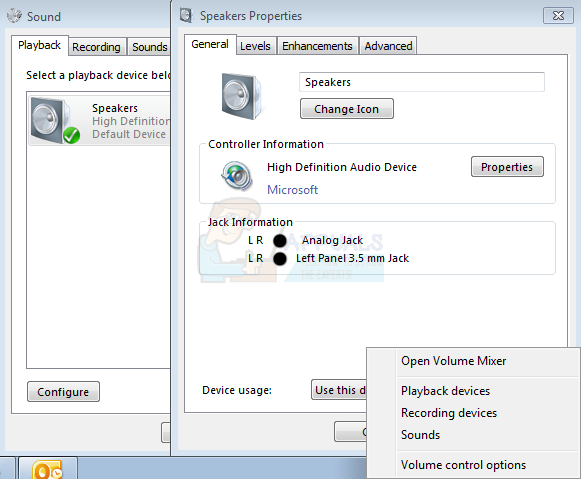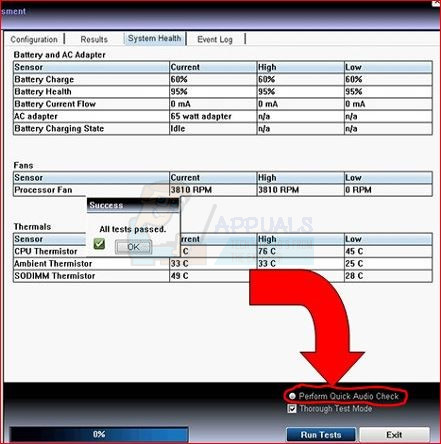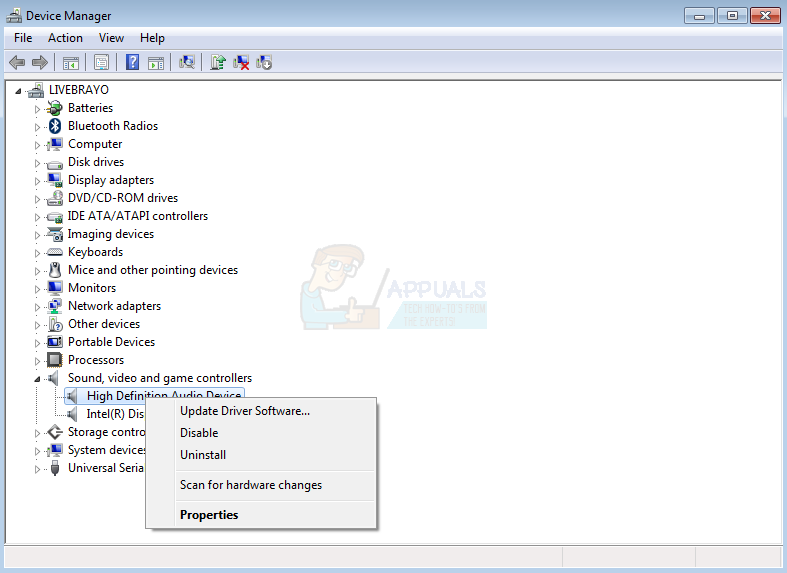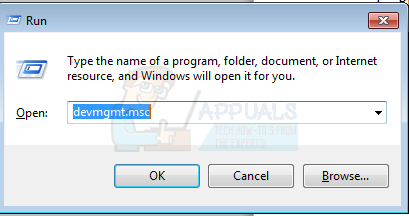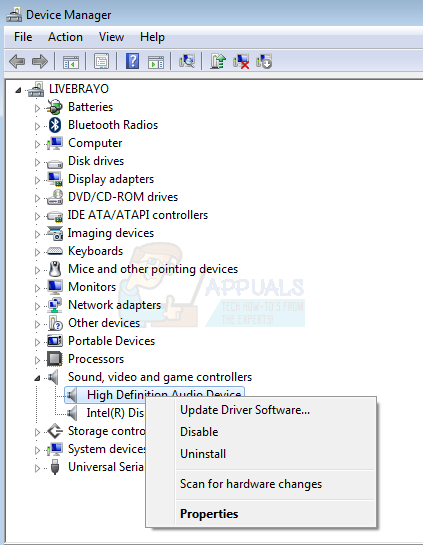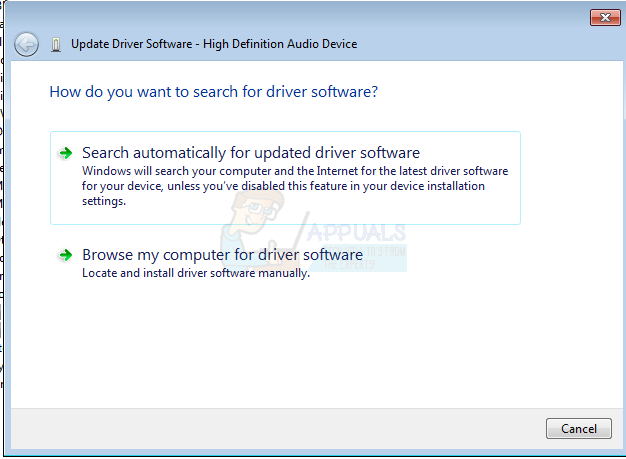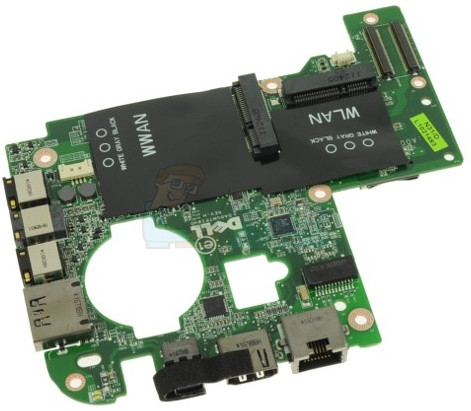Why sound plays only through the headphones/audio jack
Narrowing down the problem will hasten finding the solution. There are three reasons as to why your audio jack gets you sound but your internal speakers don’t work when the jack is removed.
Troubleshooting the problem
To troubleshoot and narrow down the problem, you can use of the audio test utility in Windows. Right click on the speaker icon on the right bottom of the task bar > choose ‘playback devices’ choose a playback device e.g. the speakers and double click on it. Go to the advanced tab and play the test sound. The selected device should play the sound. Since Windows 7 cannot separate the headphones from the speakers, this method of troubleshooting might not work.
Another way to troubleshoot your sound is to use the system Pre-boot Assessment Tests (PSA or ePSA). This is a set of ROM-based diagnostics that resides in a BIOS chip on the motherboard. The tests main audio function is to tell you if your speakers are working or not. In a case where there is no audio through the speakers but there is audio through the headphone jack, you can use the test to determine whether or not the speakers are dead. The diagnostic tool might be available in some computers (e.g. dell) and might be missing in others. Re-start the computer and tap the F12 on booting > Select ‘Diagnostics’ from the boot menu press the Enter key to either the ePSA or the PSA tests will open — it depends on the model of your laptop > look for a “Perform Quick Audio Check” button on the bottom right side of the ePSA main menu screen, press the button and listen for the beep tones from the speakers.
If no sound plays in the ePSA/PSA environment, then your speakers might be dead or your audio board might be fried. If it does play a sound, then the problem is caused by the audio jack or by bad drivers. Below are the solutions to the problem you might be experiencing.
Method 1: Dislodge the stuck audio sensor
If the audio port sensor is stuck on the ‘audio jack inserted’ position, then dislodging it will get things back on track. You must do this carefully though. Here are some of the ways to get it dislodged.
Method 2: Uninstall and install your audio drivers
Windows usually has a repository of drivers for audio devices. If your drivers are the problem, the generic Windows High Definition Audio drivers usually work. To get them, follow these steps:
Method 3: Install the updated audio drivers for your device
If your drivers are out of date, or are not compatible, finding the correct drivers is paramount. You can do this in two ways. The first is to update your drivers from the device manager, and the other is to download the latest drivers from your manufacturer’s website.
Method 4: Replace the audio jack port or audio board
If using method 1 does not work and the problem is narrowed down to the audio jack, then it would be wise to replace the audio jack. Make sure that you do not void your warranty doing this. You can get your audio jack replaced at a repair shop. If your audio board is fried and your diagnosis has ascertained that the audio board is dead, you might have to replace the whole board. The audio mechanism might be housed on a daughter board as seen in some laptops e.g. the Dell XPS L701x model has a replaceable jack circuit board sold as a WLAN/Audio daughter board (available here). If your dead audio device is embedded onto the motherboard, it might be necessary to replace the whole motherboard if repairs are impossible. An inexpensive workaround is to used USB Bluetooth speakers.
Fix: Laptop Speakers CracklingHow to Fix the Logitech Speakers not Working Problem on Windows?Fix: Bluetooth Headset Cannot Be Used as Both Headphones and SpeakersFix: Realtek HD Audio Manager Headphones and Speakers Show Up as Same Device

